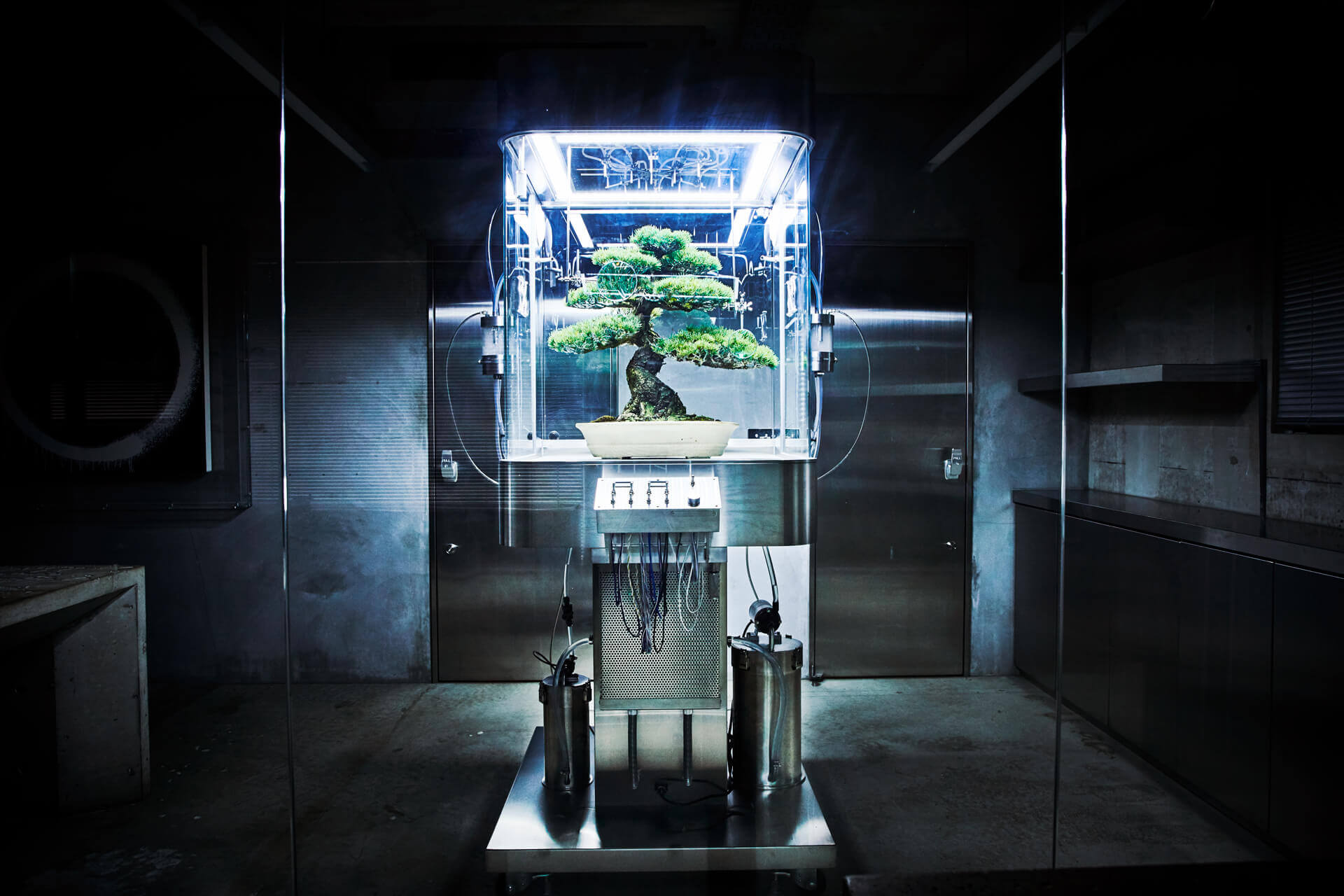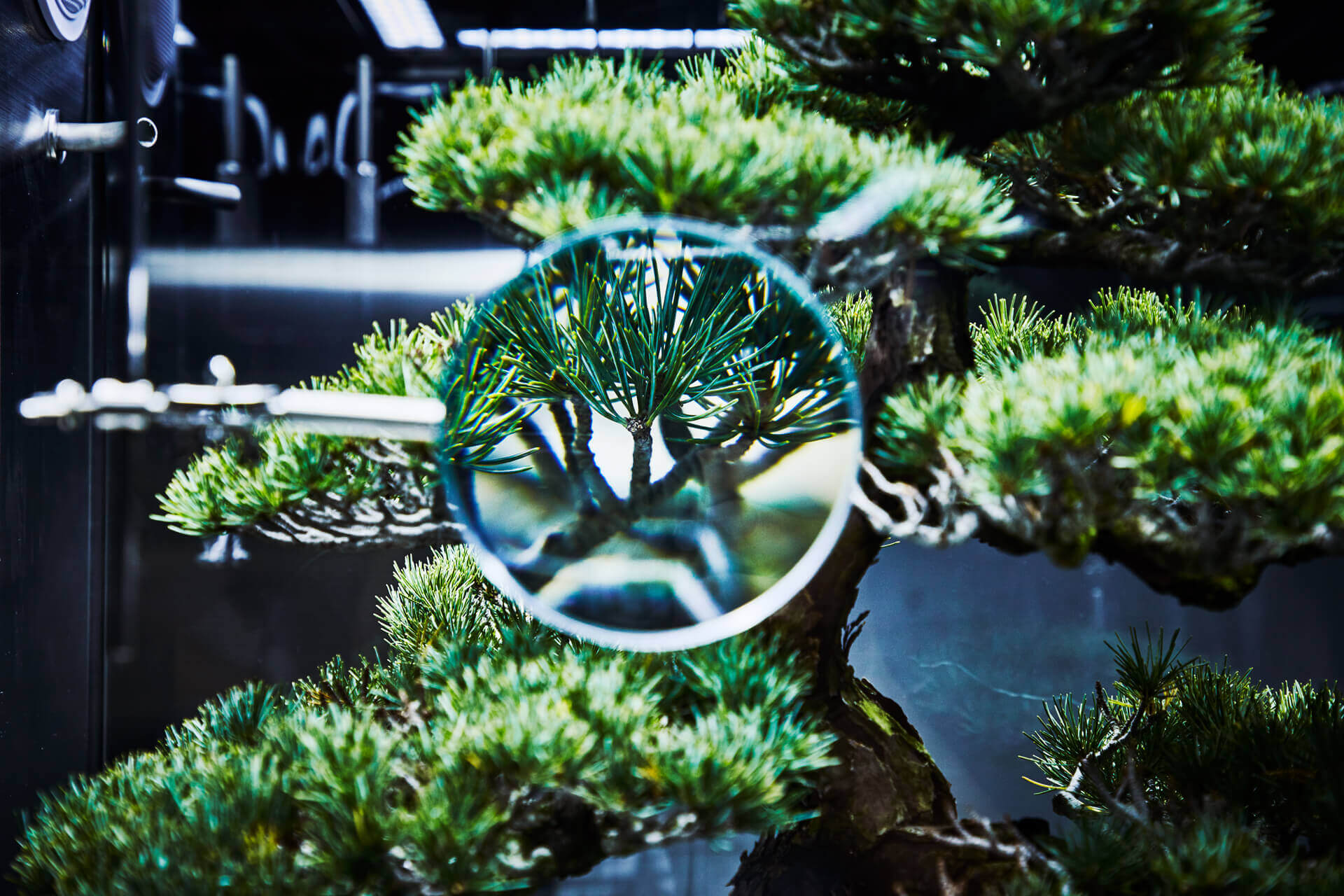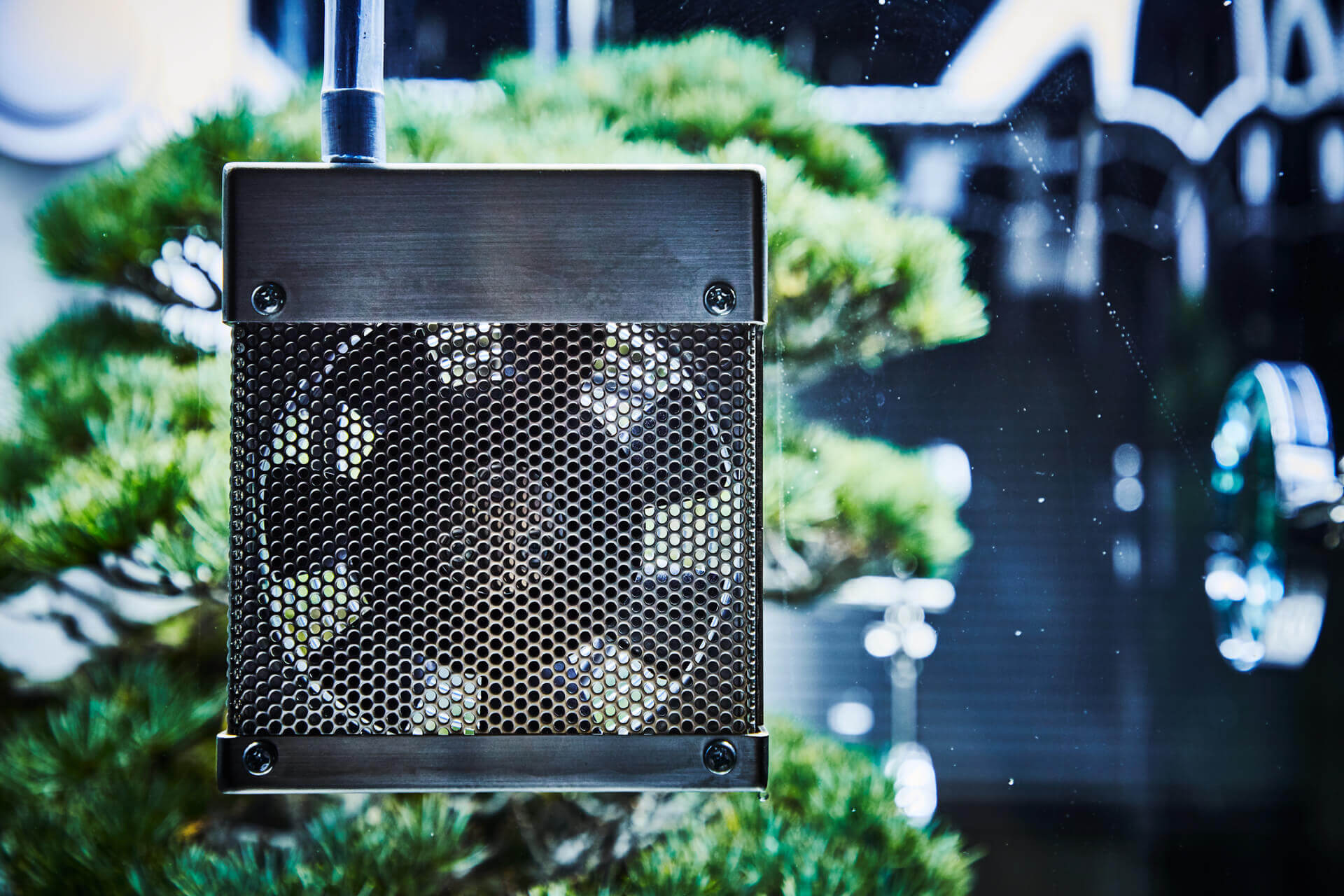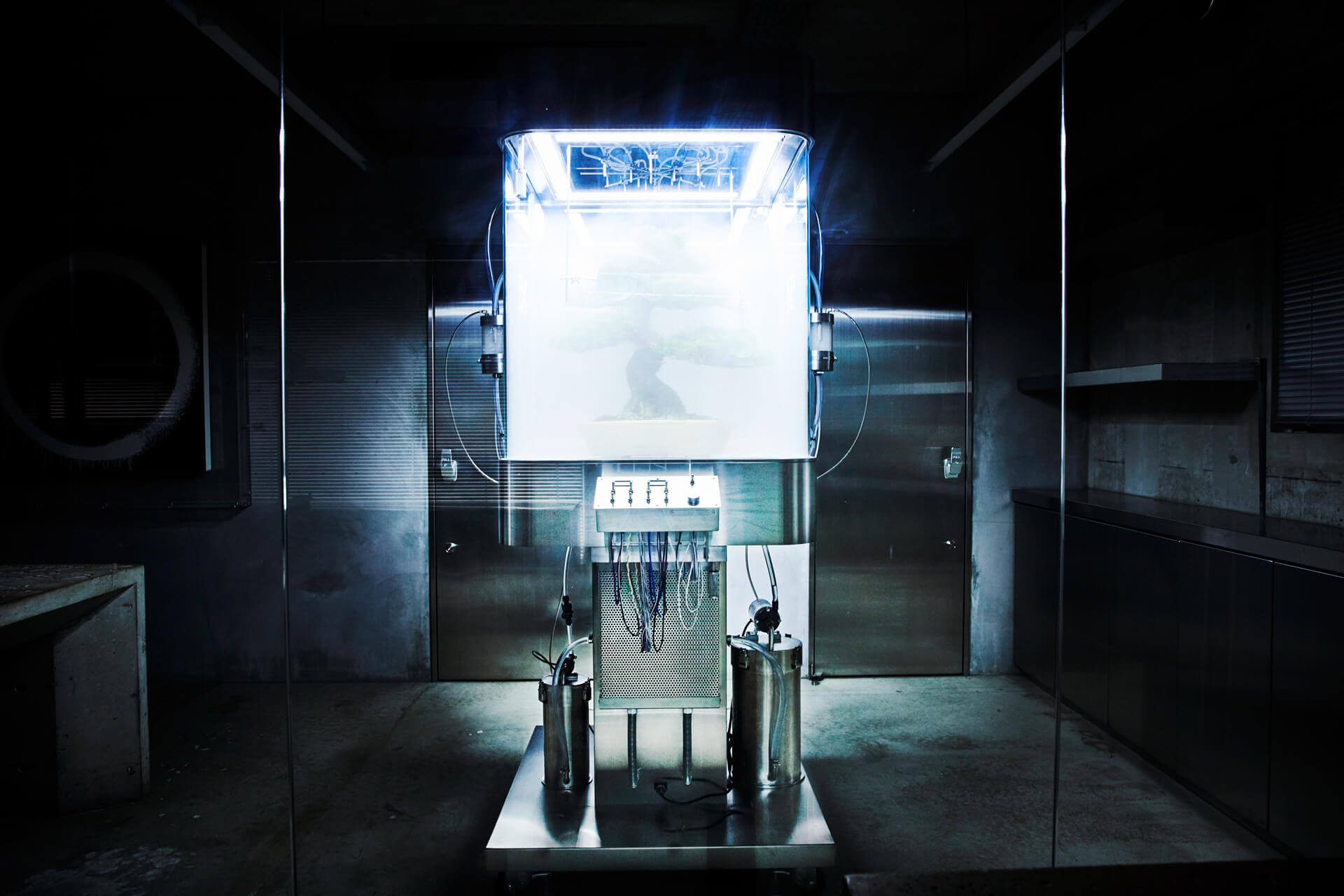Paludarium, When the Science of Flowers Becomes an Art Form
Azuma Makoto is one of the most famous flower artists in the world. Since 2005, he has been developing fascinating art installations.

“Paludarium TACHIKO” @shiinoki / AMKK
Inspired by the first models of paludariums—systems designed to protect plants—Azuma Makoto has devised a variety of installations. His Paludarium TACHIKO, created in 2019 as part of a series, relies on four elements: rain, wind, light, and sound.
It was while working at Tokyo’s flower market that Azuma Makoto developed his passion, which led him to found Jardins des Fleurs in 2002, a flower studio for individuals and companies all over the world. Born in 1976, Azuma Makoto saw his career take an artistic direction in 2005, and applied his knowledge to produce installations that transform flowers and plants into a means of expression. In 2008, he founded AMKK (Azuma Makoto Kaju Kenkyujo), a company that specialises in experimental floral creations.
A high-tech version of a 19th-century creation
Azuma Makoto’s intention is to recreate a complete ecological cycle by artificial means, much like terrariums and aquariums do. To achieve this, the artist draws on the principle of the Wardian Case, invented in England in the 19th century. This system, initially designed for the transportation of plants from British colonies, made it possible to observe growth cycles in a closed environment. Azuma Makoto has developed a high-tech version of the tool.
‘This machine is fully equipped with a drip feed-water system and a mist machine […] to control the inside temperature and humidity. It can also fully capture natural light thanks to glass on all sides, and one can observe a plant in detail through the original flower magnifying glass hanging in the front’, the artist explains on his website.
Although the Paludarium TACHIKO was acquired by a private collector, the artist has revealed that he is working on the continuation of the series, and is creating new versions.
In another of his experiments, Azuma Makoto went to the Black Rock Desert in Nevada for his Exobiotanica project. This installation invites the viewer to observe the life of a plant suspended in space.
Azuma Makoto’s work can be discovered in the book Flower Art: Makoto Azuma (2019), published by Thames & Hudson. More information can be found on the artist’s website.

'Paludarium TACHIKO' @shiinoki / AMKK

'Paludarium TACHIKO' @shiinoki / AMKK

'Paludarium TACHIKO' @shiinoki / AMKK

'Paludarium TACHIKO' @shiinoki / AMKK
TRENDING
-
The Tattoos that Marked the Criminals of the Edo Period
Traditional tattoos were strong signifiers; murderers had head tattoos, while theft might result in an arm tattoo.

-
Paris, Tokyo: Robert Compagnon
With his co-chef and talented wife, Jessica Yang, Robert Compagnon opened one of the top new restaurants in Paris: Le Rigmarole.
 3:31
3:31 -
The Story of Sada Yacco, the Geisha who Bewitched Europe
Described by Dazed magazine as the first beauty influencer, she has been restored to her former glory since 2019.

-
Ito Jakuchu's Naturalist Paintings
From 15 September until 14 October 2018, the Petit Palais showcased the artist's iconic ‘Images of the Colourful Realm of Living Beings’.

-
Chiharu Shiota, Red Threads of the Soul
Last year, more than 660,000 people visited the retrospective 'Chiharu Shiota: The Soul Trembles' exhibit at the Mori Art Museum.





